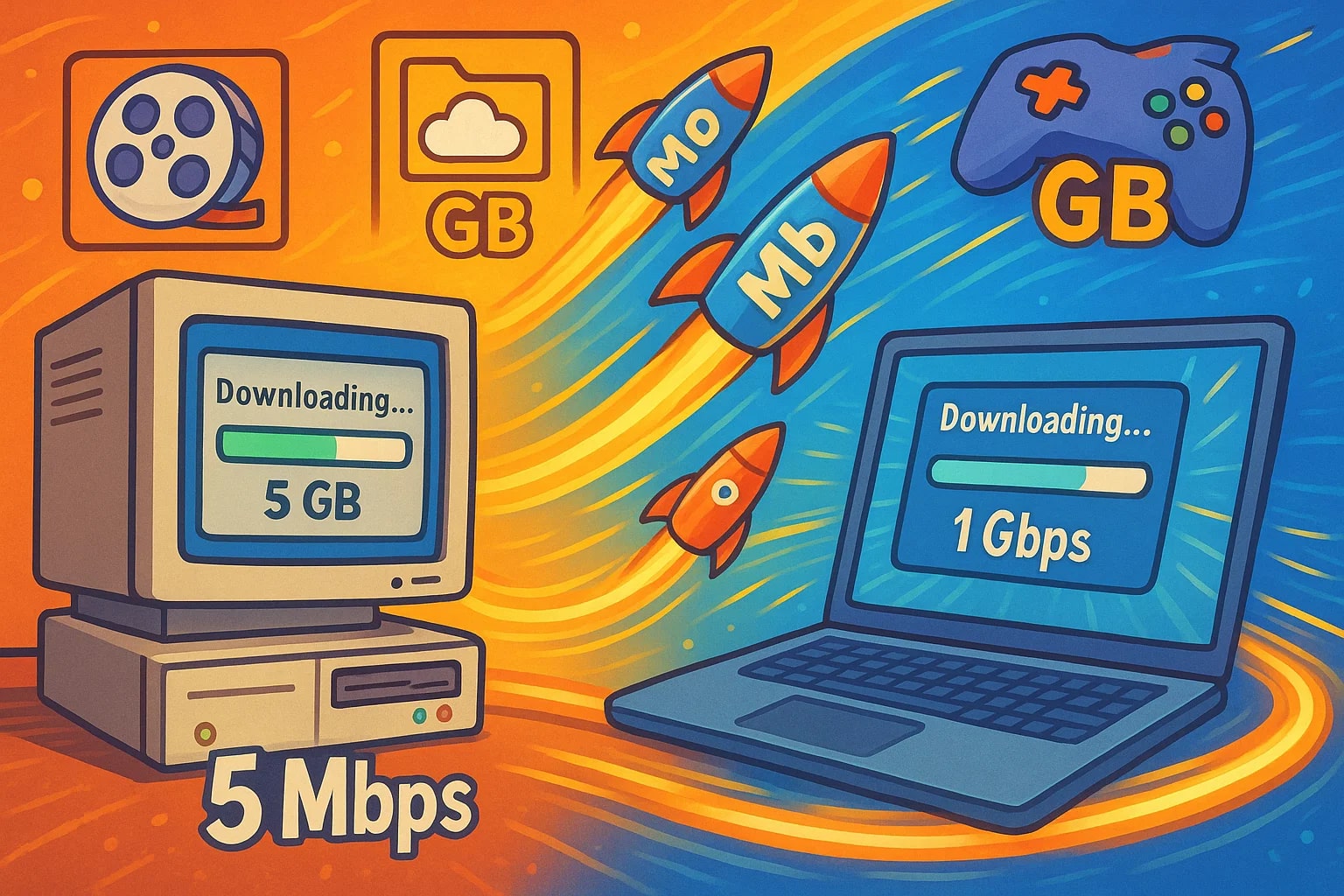gigabyte to megabit – How to convert GB to Mbit
Whether you’re planning a file transfer or reviewing data usage, you’ll often see gigabytes used for file sizes and megabits for internet speeds. If you’ve ever tried to estimate how long a download will take or how much data a transfer includes, converting gigabytes (GB) to megabits (Mbit) is a crucial step.
Here’s how the conversion works, with clear examples and real-world context to help you make sense of it.

What is a gigabyte (GB)?
A gigabyte equals 1,000,000,000 bytes. It’s commonly used to measure:
-
File and folder sizes
-
Storage capacity (hard drives, SSDs, USBs)
-
Application and system sizes
-
Cloud storage quotas
Because 1 byte = 8 bits, a gigabyte is equivalent to 8,000,000,000 bits.
What is a megabit (Mbit)?
A megabit is a unit of digital data equal to 1,000,000 bits. Unlike the byte-based gigabyte, megabits are mostly used in:
-
Network speeds (e.g. 100 Mbps internet)
-
Streaming bitrate settings
-
Data transfer rates for downloads and uploads
This makes converting between GB and Mbit especially useful when comparing file sizes to connection speeds.
How to convert gigabyte to megabit
The conversion path is:
1 GB = 1,000,000,000 bytes = 8,000,000,000 bits
1 megabit = 1,000,000 bits
So the formula is:
megabits = gigabytes × 8,000
Want a faster version? Just multiply by 8,000.
You’re about to download a 3 GB game. To know how many megabits that is:
3 × 8,000 = 24,000 megabits
You’ve uploaded 7.5 gigabytes to a cloud server. In megabits, that’s:
7.5 × 8,000 = 60,000 megabits
Your daily backup size is 0.2 GB — in megabits:
0.2 × 8,000 = 1,600 megabits
Need help running the numbers? Use our Data Storage Converter or browse other calculators in our Conversion tools directory.
Did you know?
-
A 1-hour HD video stream can use around 3 GB, which equals 24,000 megabits — crucial when budgeting for mobile data.
-
A 100 Mbps internet connection can transfer 12.5 megabytes per second, or 100 megabits per second, making it easier to estimate download times using GB → Mbit conversion.
-
Cloud service providers often show upload speed in Mbps but charge based on gigabytes stored or transferred.
-
Speed tests measure in Mbps, but your downloaded files are sized in GB — converting between them helps you manage expectations.
-
High-definition video files (Blu-ray rips, 4K content) are often measured in GB but streamed at bitrates in Mbps — bridging these units is key for performance planning.
When file size meets download speed – how this conversion matters
Think back to the early days of broadband. A 5 GB file on a 5 Mbps connection would take over 2 hours to download. Why? Because that’s 40,000 megabits, and your connection is only handling 5 megabits per second.
As home and business internet speeds grew — into the hundreds of megabits and even gigabits per second — the gigabyte-to-megabit relationship became even more important. Today, you can download multi-gigabyte files in minutes or even seconds. But whether you're sending large video files, syncing backups, or streaming high-res media, knowing the difference between these units lets you plan more efficiently.
In media production, software deployment, and cloud architecture, it’s common to plan resources using gigabytes for storage and megabits for transfer — making this conversion a core part of digital workflows.

Multiply by 8,000 — and you’re set
The gigabyte to megabit conversion is fast and reliable:
megabits = gigabytes × 8,000
Use it anytime you need to align storage sizes with transfer speeds or estimate download times with confidence.
Try it yourself with the Data Storage Converter, or explore more helpful tools in our full Conversion tools collection.

